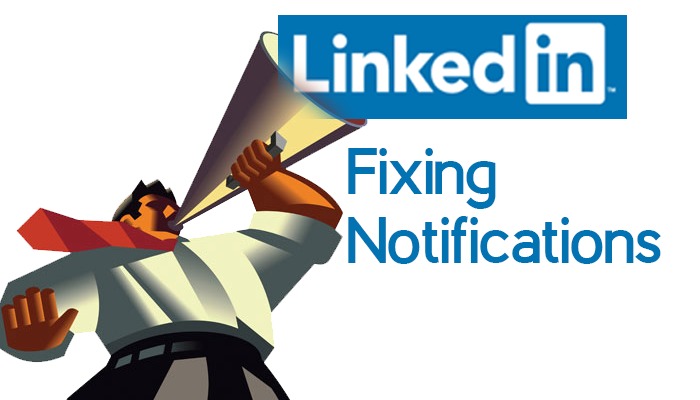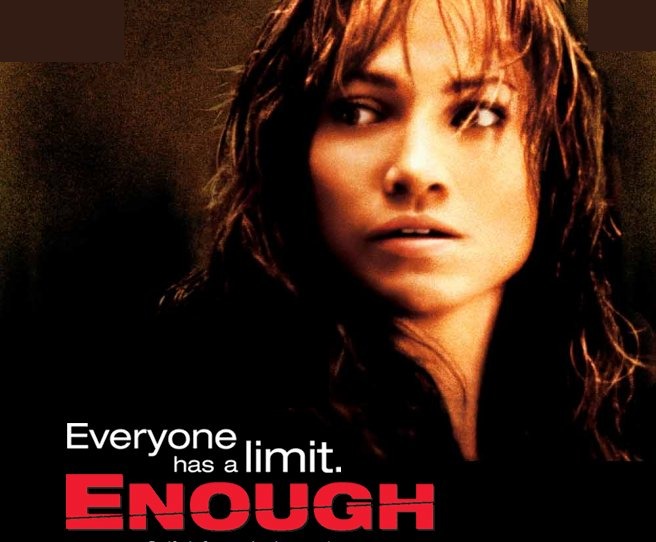How to Self-Publish? Writing is the Easy Part
Italicized notes in brackets are updates/new questions.
Regardless, I think I am making good headway. I am just about ready to share my findings with you all. Then, I will test them. Then, I will share the results with you. Then I'll test again.
I realize that process sounds backward, too bad.
I'm hoping we can collaborate to find a solution to the issue Paul V. Walters brought up in his post, "Securing A Literary Agent Is Bit Like To Trying To Catch The Wind."
I'm also hoping I can use what I find for my clients. Everybody preaches mobile-first, then their case-studies and white papers are in PDF.
Have you every tried reading one on your phone?? YUCH!
Usng eBook formats would go a long way towards building coprorate readership as it would for private authors.
===========================================================================
My apologies. This post will likely raise more questions than it answers. I’m hoping to tap our collective mind for a solution. I don’t mean for the title to be click-bait.
I recently had a series of meetings with a publisher. I was so flattered I nearly lost my professional outlook.
You want me to do what? Ok, sure. But you will publish it, right? Great! Whatever you say is A-OK with me!
I was proud as punch, but I had nagging doubts. They were strong enough to bring my business head back to the forefront. I didn’t sign.
When my gut whispers to me there’s something wrong. There usually is.
In this case, it wasn’t whispering. It was screaming.
It had to.
My pride was deafening.
I have a modicum of talent when it comes to writing. I’m also damned prolific. I would love to spend my whole day at the keyboard. Cats, cigars, and single-malt Scotch could surround me, a la Hemingway.
More likely, cats, carrot sticks, and Coke Zero™ would surround me. Whatever, cats make good roommates.
So what stopped me? Where did the nagging doubt in the back of my mind come from? I can thank Jeffrey Strickland and Deb Helfrich for helping explain it.
Jeff wrote “Let Lulu Help You Publish” back on March 24, 2015. That was two months before I joined LinkedIn. I missed it, obviously. Later, when I scanned through Jeff’s rather large collection of posts, I missed it again.
Seven months later, Deb shared a bunch of Jeffrey’s older posts. One of them was “Let Lulu Help You Publish.”
This time, I didn’t miss it. I read it. Then it hit me...
Writing is the easy part.
I’m not kidding. Let’s step back a minute. Forget the creative side of writing for now. Let’s treat writing like manufacturing. We aren’t writing a post or book. We are building a product.
Making a product is easy. Making a good product is a lot harder. Selling and distributing either is crazy hard.
How many companies have failed because they couldn’t get their products to market?
Writing is easy. Writing well is a lot harder. Getting the written work into a reader’s hands is crazy hard.
How many books, papers, and novels are neither in Published Heaven nor in Published Hell? They sit languishing in anguish in Published Purgatory. I would guess that would be most of them.
The publisher I was speaking to did not address distribution issues well enough. Production without distribution is folly. That applies to writing as much as it applies to any business.
Does it have to be this way?
Frankly, I hope not.
We are living in the Golden Age of Instant Communication. We are an Always-On society. The era of the Global Tribe (Hive?) is upon us. An individual with a modicum of talent can create a written work. It should be possible to distribute that work to a sizable Tribe.
To paraphrase, the road to Hell is paved with ideas that “should” be possible. Is this one of them?
To be honest, I don’t know – yet. Jeffrey’s article sent my hunter’s instincts into overdrive.
Here’s what I found so far:
- Since late-2007, Amazon has sold about 30 million Kindle readers. The Kindle Fire alone has about 17.5 million active monthly users. (Forbes) (Estimates are much higher now, but I don't trust the sources as much as I trust Forbes. I'll keep this number until Forbes re-states it.)
- There are over 35 million iPads and a similar number of other tablets. (Forbes) That makes the total for tablets about 70 million. (the previous comment applies here too.) Let’s not even bother with the gazillion laptops and desktops out there.(NOTE: Getting anything that does not come directly from Amazon to actually show up on a Cloud Reader is NOT easy. The default is to not allow it. The user must activate the option manually. Like that's gonna happen! Amazon seems to be bowing to pressure and changing that.)
- The Kindle app is available for both Android and iPhone. People downloaded it over 21 million times. (Amazon) (Over 50 million times now)
- The Kobo reader (Go, Canada, Go!) has an installed base of about 15 million. (Wikipedia)
- Barnes & Noble has about 8 million Nook readers in circulation. Nook is also available as a browser plugin and an app for the Windows Phone. (Wikipedia)
- (I'm not a big Apple fan. I forgot all about iBooks. That's yet another huge market)
- There are many other reader apps for smartphones. These mostly follow the International Digital Publishing Forum’s EPUB standard. (Ex: “Stanza” and “Shortcovers”)
- Adobe has their “Adobe Digital Editions” eBook reader app. That covers the desktop and laptop crowds.
Let’s just forget all those numbers for a minute.
We know that total downloads are no proof of regular use.
We also know that buying a gadget is not the same thing as using it. Heck, I bought my Kobo five years ago and never used it until today. It was still shrink-wrapped. (I've since bought a Kindle Fire)
We also know that there is a lot of duplication in these numbers. I have my Kobo, a Kindle app on my Android phone, another on my iPad, and a partridge in a pear tree.
Forget the numbers for now. Let’s not debate their accuracy. No matter what filter you apply, that’s one helluva lot of potential readers.
Does the answer lie with eBooks? If so, how do we get to those readers?
I’m still not clear on the answers. (I think I'm much closer now, but time will tell)
Give me time. I’ve only been at this for a couple of hours. (Darned close to 8 months now! Okay, one month was spent writing a book to use as a test platform, but still. This is much more complex than just figuring out a social platform.)
Technical points
An eBook is just a computer file. It would be too easy if they used a common standard format. All readers can view PDF files (badly), but the distribution networks don’t like them ('cause they are a pain to read on any mobile device, be it . For example, the Kobo considers PDF files “Documents.” It places them in a directory separate from books.
That’s not good. Given the nature of the eBook-reader beasts, PDF just doesn’t cut it as a viable option.
Kindle uses their proprietary MOBI format. (Now in a ton of versions. Some are aimed at picture-intensive books like Children's Book, Graphic Novels, and Cookbooks. Others aim more at things like textbooks and how-to stuff) Everyone else uses the more generic EPUB format. That means you need two versions of your manuscript to cover the market. Kindle also has some newer formats that show promise. Most legacy systems do not support them. (see previous comment)
Image considerations
My research says that images, charts, and mathematical/scientific formulae are an issue. (not anymore. The new formats fix that, at least for Kindle. ePub may still be an issue. Amazon is the Whale here. ) Frankly, I’m not sure why this would be so. I’m digging into it. The warnings may have something to do with anchoring problems.
Images must be in RGB (Red-Green-Blue) or plain black and white. The formats adjust images to RGB automatically. I wouldn’t trust them. Automatic conversion can produce bizarre moiré effects. Better to save your images as RGB in the first place.
This contrasts with the need for CMYK images used in printing. CMYK stands for Cyan-Magenta-Yellow-Black. When a printer talks about 4-color process, he means CMYK color.
An existing manuscript may not be suitable as is. You may actually need four versions of your manuscript. You may need EPUB, MOBI, PDF, and Print-Ready PDF with CMYK images. (The jury is out on this one. Amazon now offers a print-on-demand service. So far, I just know it exists. I haven't yet dug into it. If anyone has, please talk about it in the comments.)
(Both format-families, ePub and Mobi are "proprietary" implementations of HTML. There's a right way and a wrong way to set your files up. That topic can fill a book. In fact, it has already filled several.)
The first three are no big deal. The last may prove to be too much trouble. You may already have a Print-Ready manuscript. You may then have a beast of a project converting your images. (Thanks to my graphic artist wife, this is not really an issue. She showed me how to do bulk conversions. Still, you really should take a peek at each to make sure they converted well.)
Advantages of eBooks
- They cost close to nada to produce. I mean the actual physical production, not the writing part.
- They are only “printed” when someone buys them. There is no possibility of having a garage full of unsold books.
- Ebooks are computer files. They can be stored on servers. You can create links to download them. You can put those links just about anywhere. That should help with distribution. (Again, people who use Amazon Cloud Readers will need an explanation of how to turn that functionality on.)
- Since they are computer files, you read them on a computer of some sort. That implies immediate access to extra or interactive web content.
- eBooks are searchable. Indices and tables of content are live links.
- eBooks are liquid. Any revisions are immediately in distribution. You don’t need to worry about older editions sitting in stock. There is no stock. There may be a way to update distributed copies as well. (not have I know of so far) Whether that’s something an author wants to do is another question.
Disadvantages of eBooks
- Some people like hard copy books. There something about holding one, dog-earing the pages and scribbling notes in the margins. This is particularly true for books that people refer to often. (Print-on-demand may solve this issue. It may also be too pricey to bother with. I'll get to it later. In any case, just from a marketing standpoint, offering a printed version lends a sense of legitimacy.)
- A disadvantage particular to Kindle’s MOBI format is that you cannot embed fonts. (Some newer formats allow it. Those newer formats only work on newer Kindles) Exercise great care in the look and feel of your work. Test it on a Kindle emulator or an actual Kindle. Avoid the Franken-book.
- The main distribution channels insist on an ISBN number for all listings. This will limit you to larger works. You can distribute your blog in eBook form through your website, but not through the big boys. The PITA factor would be prohibitive. FYI: PITA = (P)ain (I)n (T)he (A)ss. (For Canadians, it isn't a pain in the ass at all. I completed a web form. Got a phone call and had 100 ISBNs reserved all within a couple of days. This will change by country. Check for yourself.)
- EBooks have no pre-set pages. Think of them as one, super-long, scrollable page. This fact wreaks havoc with image placement. Images must be well set and anchored. Otherwise, they may all end up bunched together at the beginning or end of the eBook. I can also see where image captions may be tricky. (Some newer formats fix this issue. They also cause other issues. This is a technological limitation, not some nefarious Amazon plot.)
I must still answer many questions
What’s the best form factor for an eBook? Is there a standard (ex.) 9-inch by 6-inch page a consideration? Is there an optimal width? Does it even matter?
(Whatever. My test book is 5.5X8. That's the suggestion for the print-on-demand stuff.)
What is the most effective way to use images? What are the sizing and re-sizing considerations? Do pictures auto-scale or do they auto-crop? They should auto-scale, but I need that confirmed.
It seems simple.
Usually, when something seems simple, it means I’m missing something.(As confirmed by the fact that now, eight months later, I am nearly ready to test my theories.)
What other aspects of eBook publishing/promoting am I missing? (Heck, back then there were questions I didn't even know to ask let alone answers. Hey, it's a work in progress. we'll get there, or not, together.)
And, the RBAQ (Really Big-Assed Question) …
How do we best access this huge pool of readers?
I’m open to suggestions and thoughts. Please share yours. (I have come up with several methods that should help. "Should" is the operative word. I won't know until I test them. That will be soon.)
Special Thanks go out to my wife and super-talented graphic designer, Filomena (Fil) Tedone for helping me breeze through the graphics stuff and the possible ramifications of font switching.
Articles from Paul "Pablo" Croubalian
View blog
Sign up for one year of Managed Account Services and get 3 months free! (limited time offer) · Manag ...

This article's title could just as easily have a question mark at the end. It will offer my thoughts ...

This is the seventh post in the MisAdventures in Mid-Life Dating series. Some of you may be thinking ...
Related professionals
You may be interested in these jobs
-
accounting technician
Found in: Talent CA 2 C2 - 3 days ago
Perimeter Institute for Theoretical Physics Waterloo, CanadaEducation: College, CEGEP or other non-university certificate or diploma from a program of 1 year to 2 years · Experience: 3 years to less than 5 years · Work setting · Head office · Tasks · Calculate and prepare cheques for payroll · Keep financial records and establish, maintai ...
-
Digital Coordinator
Found in: beBee S2 CA - 1 day ago
Dentsu Media Toronto, Canada Full timeCompany Description · We are Dentsu. We innovate the way brands are built. That means we do things differently so they're better than before. In this way, we make our clients' most important marketing assets—their brands—win in a changing world. Dentsu is Innovating the Way Brand ...
-
Assistant Comptable
Found in: Talent CA C2 - 1 day ago
IPAC Bachelor Factory Laval, Canada AlternanceL'école de commerce propose des formations Bachelor équivalent Licence – Bac , accessibles à BAC et délivrant un titre Certifié par l'Etat niveau II comme validation professionnelle. Résolument tournée vers l'employabilité, Ipac Bachelor Factory développe depuis plus de 30 ans un ...



Comments
Paul "Pablo" Croubalian
7 years ago #6
What I have found so far, is that the process seems somewhat counter-intuitive. So far, I believe that "proof of skillset" is the main issue. There are thousands of self-published works. Which ones are worth reading let alone buying? That is the primary issue I will investigate. The eBook market is massive. I can't believe there isn't a way for an individual to access it. Fingers crossed. Time will tell, and all that stuff.
Paul "Pablo" Croubalian
7 years ago #5
Audiobooks are a definite option and one that Amazon does offer. You can either narrate it yourself, or team up with with a pro. I will be digging deeper into it later.
Dean Owen
7 years ago #4
Paul "Pablo" Croubalian
7 years ago #3
agreed. I'm looking for a way to leverage Amazon, Barne& Nobel XP iBooks, etc to proactively market a selfish published book(s). More, i want to do it easily and quickly. I may be dreaming in technicolor
Paul "Pablo" Croubalian
7 years ago #2
the problem i see with old school paper books is that the writers is at the mercy of the publisher. Ebooks level the playing field in our favor.
Paul "Pablo" Croubalian
7 years ago #1
Hopefully, by the time you are ready, our collective heads will come up with a viable solution to the author self-promotion conundrum. Hey, Gary Sharpe, we could use some Sherpa-magic on this subject.